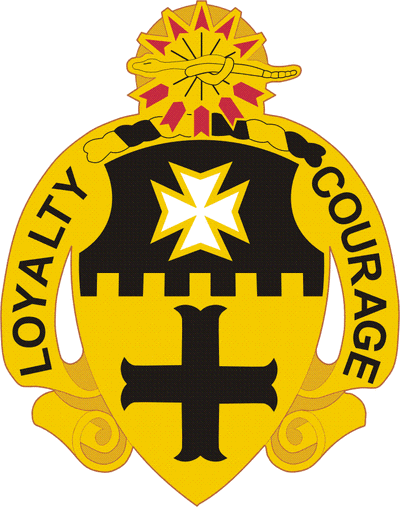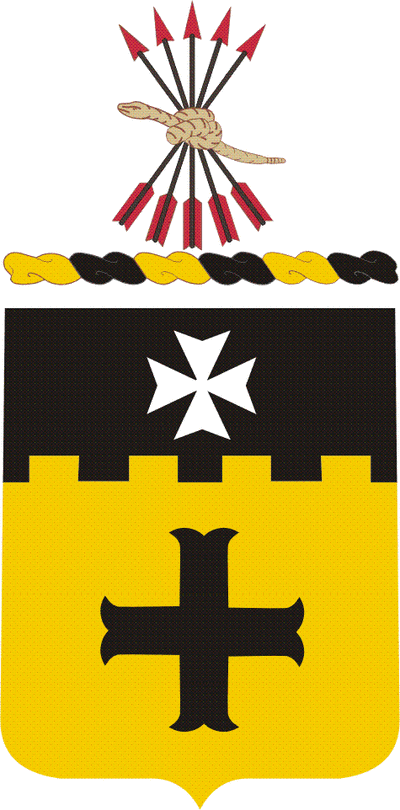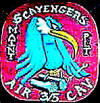5th Cavalry Regiment
“BLACK KNIGHTS”
The 5th Cavalry Regiment began its long history on 28 May 1855 as the 2nd United States Cavalry Regiment at Louisville, Kentucky. In that year, the United States Army formed two new cavalry regiments. Three other “cavalry type” regiments existed when the new regiments were formed, but they were designated as either dragoons or mounted rifles. The 2nd Cavalry was initially commanded by Col. Albert Sydney Johnston.
On 27 September 1855, the regiment marched west to fight in its first Indian campaign, which took place in Texas. When Col. Johnston was selected to lead an expedition against the Mormans in Utah, command passed to LTC Robert E. Lee. The regiment served on the frontier in Texas until the out break of the Civil War, fighting in a total of thirteen Indian campaigns, symbolized by the arrow head-shaped regimental crest.
Early in 1861, the regiment went to Carlisle Barracks, Pennsylvania, where the officers and men loyal to the South left the regiment to serve in the Confederacy. LTC Lee was replaced by LTC George C. Thomas. In 1861, all cavalry-type regiments where redesignated as cavalry, and the units were redesignated with the lowest numeric designation going to the oldest organization. At this point, the 2d Cavalry was redesignated as the 5th Cavalry and has remained as such ever since.
During the Civil War, the troopers of the 5th Cavalry made a charge against the lines of its former commander Robert E. Lee at Gaine’s Mill, Va. on 27 June 1862, saving the union artillery from annihilation. This battle is commemorated on the regimental crest by the black cross, the Cross-Moline, in the yellow field on the lower half of the crest.
At the outbreak of the Spanish-American War, the 5th Cavalry was ordered to Tampa, Florida and then embarked for Cuba. The regiment’s service in this war and later in the Puerto Rican Expedition is symbolized by the White Maltese cross in the black chief of the upper half of the regimental coat of arms.
The 5th Cavalry returned to the United States in 1900. The regiment served in the Philippine Islands, and in Hawaii, in 1903 and 1909 respectively. In 1913, the regiment returned to the United States, where it stayed during World War I, patrolling the Mexican border. On 18 December 1922, the 5th Cavalry Regiment became part of the 1st Cavalry Division, and has served with this division ever since.
Having exchanged horses for vehicles in 1943, the men of the 5th Cavalry Regiment spent World War II in the jungles of the South Pacific. After the war, the regiment was garrisoned in Japan. In July 1950, the regiment was sent to Korea to serve with other United Nations forces. After one and a half years of combat, the regiment returned to Japan in 1951.
 |
 |
| DISTINCTIVE UNIT INSIGNIA | COAT OF ARMS |
Distinctive Unit Insignia. Description: A Gold color metal and enamel device 1 7/32 inches (3.10 cm) in height consisting of a coat of arms blazoned as follows: Shield: Or a cross moline Sable, on a chief embattled of the last a Maltese cross Argent. Crest: On a wreath of the colors (Or and Sable) a bundle of five arrows Sable armed and flighted Gules, tied with a rattlesnake skin having five rattles Proper; the device enclosed within a motto scroll arcing over the top of the shield and inscribed “Loyalty” on the dexter side and “Courage” to sinister in Black letters.
Symbolism: The shield is yellow for Cavalry. The cross moline symbolizes the charged of this Regiment on Longstreet’s troops at Gaines Mills in 1862; a charge which saved the Union artillery and which is characterized by the Regimental historian as “its most distinguished service.” The cross moline is supposed to represent the iron pieces of a mill stone (moulin, the French word Mill). The chief is for the Puerto Rican Expedition of 1898. The original name of the island was San Juan, named for the old knights of St. John who wore a white maltese cross on a black habit. The partition line is embattled to suggest the castle on the Spanish arms. The crest is for the Indian campaigns of the Regiment; the number of arrows corresponds to the numerical designation of the organization.
Background: The distinctive unit insignia was originally approved for the 5th Cavalry on 19 January 1923. It was redesignated for the 5th Cavalry Regiment (Infantry) on 16 December 1953. The insignia was redesignated for the 5th Cavalry on 10 July 1959. It was amended to revise the symbolism on 23 June 1960.
Coat of Arms.
Blazon:
Shield: Or a cross moline Sable, on a chief embattled of the last a maltese cross Argent.
Crest: On a wreath of the colors (Or and Sable) a bundle of five arrows Sable armed and flitted Gules, tied with a rattlesnake skin having five rattles Proper.
Motto: LOYALTY AND COURAGE.
Symbolism:
Shield: The shield is yellow for Cavalry. The cross moline symbolizes the charge of this Regiment on Longstreet’s troops at Gaines Mills in 1862; a charge which saved the Union artillery and which is characterized by the Regimental historian as “its most distinguished service.” The cross moline is supposed to represent the iron pieces of a mill stone (moulin, the French word Mill). The chief is for the Puerto Rican Expedition of 1898. The original name of the island was San Juan, named for the old knights of St. John who wore a white maltese cross on a black habit. The partition line is embattled to suggest the castle on the Spanish arms.
Crest: The crest is for the Indian campaigns of the Regiment; the number of arrows corresponds to the numerical designation of the organization.
Background: The coat of arms was originally approved for the 5th Cavalry on 11 June 1921. It was redesignated for the 5th Cavalry Regiment (Infantry) on 16 December 1953. The insignia was redesignated for the 5th Cavalry on 10 July 1959. It was amended to revise the symbolism on 23 June 1960.

![]()
